General Insurance Blogs, Articles & Updates by - Magma HDI
Have us call you
- RENEW YOUR POLICY
- BUY NEW POLICY

Check out these home makeovers tasks on the upcoming weekend
A home is so much more than just a shelter. It is where you create memories, watch your family thrive, and compound your wealth. Considering the constantly increasing prices of homes, buying one is a dream that not many accomplish easily. Recognising the monetary and perceived value associated with the asset, it becomes essential to protect your home and personal belongings from unforeseen circumstances like burglary and vandalism by buying home insurance India.
While home insurance India is a periodic investment that satisfies your safety requirements for a specified tenure, the interiors of your house do not fall into the same category. With changing trends, tastes, and preferences, it is inevitable to wish to renovate and alter the aesthetic appeal of your home. However, you may not have the finances to avail the services of professional designers to bring your vision to reality and design your ideal space.
In such a case, fret not! Here are some inexpensive and easy DIY tasks you can take on the weekends to give your home a new look!
1. Entryway systemiser:
The area that greets a visitor upon opening the main door is the easiest way to build a great impression and set the tone for the decor used in the rest of the house. While you may customise it as per your tastes, it is essential to keep it organised to give your home a put-together look. Revamp your entryway with a compact organiser that stores all your keys, sunglasses, and bags. While you may purchase separate hooks, boxes, or frames for this area, consider arranging existing sturdy holders to create a sustainable assorted organiser.
2. Foyer frames:
The room that the entryway leads into, often known as the hall or living room, is the most used space in all houses. It is also the best place to display valuable memories such as photographs, achievements, and sample works of your hobbies and interests. The possibilities for this idea are endless, ranging from minimalistic matching frames to vibrant and funky options in different sizes and shapes.
3. Create an accent:
Often, homeowners feel the need to refresh their homes to complete renovations. However, if you wish to see immediate results and are working on a tight budget or with limited time, an accent wall or furniture may be your ideal solution. Identify a complementary colour to the current colour palette of your home’s interiors and consider options ranging from artwork, accessories, upholstery, furniture, or a wall.
4. Refresh your accessories:
Sometimes, small changes go a long way in creating the desired results. Consider changing minute details in a themed manner to achieve a cohesive effect. This may be by changing your lights to similar-toned ones to set the mood or switching your furniture’s hardware.
5. Switch things up with contact paper:
Contact paper is your rescue if you’re looking for a quick fix to alter your furnishing and flat surfaces’ visual appeal. You can achieve this without fundamentally altering their surface by using contact papers. These decorative materials come in several trending prints and are available in the length you require per your project’s needs.
Simply peel away the backing and stick it to the desired surface. It makes changing the look of your home effortless since it is easy to remove and reuse, making it perfect for renters who wish to personalise their rented homes without going against the rules laid by the homeowner.
When facing time and budget constraints, hanging lights and getting plants are only some of the makeover options available. With creativity and consideration of functionality, you can efficiently use your time, resources, and space to create beautiful additions to your home’s appeal. As you invest your time and energy in home renovation projects, we encourage you to consider purchasing home insurance India, which is an investment in securing your home from external contingencies and protecting your finances.
Click HERE to buy home insurance India policy.
Disclaimer: The information provided above is for illustrative purposes only. To get more details, please refer to policy wordings and prospectus before purchasing a policy.

Concerned about malicious mischief and vandalism? House insurance is the solution you're looking for
Buying a home is a dream for most Indians. Considering the ever-increasing inflation, sky-rocketing real estate prices and constantly changing economic conditions, it requires extensive planning and budgeting. After putting in such efforts, a home becomes more than just a roof over one’s head- it is an investment, a sign of wealth, and probably the most important asset of your net worth.
Protecting an asset on which you have spent a fortune is essential. Buying the best home insurance policy in India is important to secure your home from multiple mishaps. While the best home insurance policy in India may offer you broad coverage from several risks, is the increasing threat of malicious mischief and vandalism included?
Read on to learn all about the specific coverage under home insurance.
What are acts of malicious mischief and vandalism?
To understand what the best home insurance policy in India covers, we must understand the meaning of the terms malicious mischief and vandalism.
Malicious mischief refers to the acts of destruction with the intent to damage or destroy property. It is usually acted out as a sign of resentment towards the property owner. Criminal mischief is recognised as a legal offence as per the Indian Penal Code, which prescribes an imprisonment term of 3 months, or fine, or both for perpetrators.
Vandalism is commonly used to describe the destruction of property without malicious intent targeting the owner. It is often seen as a mindless activity done to achieve the satisfaction of destruction rather than being fueled by ill intent. Vandalism is a punishable offence in India.
The need for malicious mischief and vandalism insurance.
While the terms may seem unfamiliar, malicious mischief and vandalism are rampant in the country. Irrespective of intent, such acts result in minor to massive losses for the property owner, depending on the scale.
In such situations, the prudent purchase of the best home insurance policy in India covering such acts pays off. Since one cannot immediately pinpoint the instigators of such acts of destruction, legal cases don't suffice as an instant relief. By comparing alternatives and purchasing the best home insurance policy in India, you can ensure the immediate raising of a claim and quick settlement of financial losses arising from vandalism and malicious mischief.
Exclusions from vandalism and malicious mischief:
1. If your property has been vacant for over 60 days consecutively, you cannot raise a claim even as a victim of vandalism or malicious mischief.
2. Suppose multiple people are listed as home insurance policyholders. If one of them intentionally indulges in destructive acts to damage the property, the other policyholders cannot raise a successful claim against the perpetrator.
General inclusions under vandalism insurance.
When comparing home insurance policies offered by multiple insurers to find the best home insurance policy in India, you may notice that each insurer offers a varying reimbursement limit and the extent of property covered under the policy. While minute details can differ, most vandalism and malicious mischief covers extend to the following.
1. Fixed structures:
The most apparent inclusions are the fixed structures on your property. This includes the house or flat's external frame, additional safety door, and exterior add-ons like mailboxes or shoe racks.
2. Personal property:
The best home insurance policy in India offers coverage for all your home appliances, furniture and fittings. Refrain from raising a claim for the destruction of commercial holdings since they are not covered by such plans.
In the backdrop of uncertainties, it is always ideal to have a security net that protects homeowners from the risk of vandalism and malicious mischief. If you are considering purchasing a house, ensure that you do due research to identify the best home insurance policy in India to safeguard your home and your finances!
Click HERE to invest in the best home insurance policy in India.
Disclaimer: The information provided above is for illustrative purposes only. To get more details, please refer to policy wordings and prospectus before purchasing a policy.
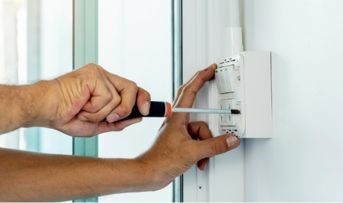
How can you detect faults in your home’s electrical circuit
Detecting faults in your home's electric circuit can be simple if you know exactly where the fault is or which appliance has malfunctioned. Proper knowledge is the prerequisite to easily detecting faults in the home electrical circuit. It can be in any room, hallway, verandah, bathroom, bedroom, or kitchen.
The power supply may get disrupted in the entire house or only some portion of it. Safety is paramount when it comes to detecting faults in electric circuits. Even a small mistake can cause loss of life and massive property damage.
Are you someone trying to detect electrical faults for the first time? Let us understand how you can proceed with it conveniently.
1. Get the right gear:
The right equipment and tools are necessary before repairing a fault in your home's electric circuit. Get the right tools that ensure your safety while checking for the fault. Use a socket tester and voltage meter to check the running current.
2. Switch off the main power supply:
Make sure you switch off the main power supply of your house before trying to touch any open wire or faulty appliance. You can also remove the circuit fuse of the particular room or area where you plan the repair. Failure to do so can result in an electric shock.
If there was smoke or crackling noise from any wire or switchboard, wear rubber boots or slippers and rubber gloves before touching any wire or board. They will provide some electrical insulation if they are made of 100% pure rubber without any holes or tears.
3. Testing a faulty appliance:
If any of your appliances are not working, you should try to plug them into another socket to ensure it is working properly. If the appliance works there, you have a problem with the circuit of that particular room. If the appliance still does not work, it means that your house's electric circuit is okay and not at fault. You will have to get the appliance repaired from the electrician.
4. Checking the Fuse / MCB:
Our homes have fuses or MCBs (Miniature Circuit Breakers) for every room and separate portions of our house. To prevent overloading, there are separate MCBs for heavy appliances, such as an air-conditioner. When a circuit or appliance malfunctions, the fuse will break, or the MCB will trip automatically, which will shut down power to that circuit.
Whenever you face a power problem in any particular house area, you should first check the respective fuse/MCB. A faulty appliance can also result in tripping off an MCB or blowing a fuse. You can repair the fuse by fixing the live wire if the fuse is blown. If the MCB is down, you should switch it on again and check for the fault in that particular room or appliance. If the problem is still there, the MCB will trip or shut off again. In such instances, you should call a qualified electrician rather than fixing it yourself.
5. Faulty power line:
If all the MCBs are also fine and there is still no power in your entire house, the problem can be bigger from the main line or the transformer. Please do not try to rectify faults from the main line because of the high voltage running through them. Call a qualified technician who is capable of repairing such faults.
You do not have to run for a qualified technician whenever you have a minor electrical fault at your house. You can also detect and repair the fault if it is not that severe and manageable. However, you should be careful while checking or repairing faults in your home electric circuits.
Faulty electric circuits and malfunctions can result in fire and heavy loss at your house. Fret not! Home insurance provides you with safety and security from any such unfortunate events. It covers the house structure and its contents and assists in rebuilding the damaged property. Get complete peace of mind by opting for a good home insurance policy.
Click HERE to purchase a comprehensive home insurance policy.
Disclaimer: The information provided above is for illustrative purposes only. To get more details, please refer to policy wordings and prospectus before purchasing a policy.

How technology-aided insurance services can be a benchmark in efficient customer handling
In recent times, technological advancements have been table-turners for corporates in the insurance industry. They aim to bring a noteworthy revolution to the conventional business management approach. The reorientation of the entire business using these futuristic technologies can be a great advantage in bridging the gap between service and convenience, which are major pain points for insurance providers.
Talking about the insurance sector, "efficient customer handling" is the need of the hour that demands the maximum technological support. If you think on a broader level, customer handling encompasses every aspect of the service provided by the insurers.
Customers are seeking higher expectations from their insurance providers to enjoy services conveniently. Insurance companies have been analysing and implementing every strategy placing customers as their top priority. With automation establishing itself diversely in every field, insurance industries are now ready to upgrade their business model to consolidate their position in the market and be more liable to their customers.
Moving into 2023, the insurance world will be riding this wave of technological advancement. It will be interesting to watch how technology-aided services help the insurance sector build a solid customer-centric approach.
Automation: Where imagination shapes into reality!
Who had imagined that getting tasks done automatically would be a practical thing? The introduction of automation is significantly impacting behind-the-scenes operations, making them more hassle-free. The involvement of automation technologies is a boon to the insurance industry that works as the brain behind all data handling tasks and achieves all desired objectives.
Companies can now supervise various processes and real-time monitoring and delivery of the services with the help of automation. This allows the organisations to lower their servicing costs, keep an eye on the operations and maintain transparency, which helps ensure faith and trust in their employees and customers.
There is a lot of sensitive information shared by the customers during their interactions with the insurers, be it purchasing, renewing, claims, etc. And this information needs to be carefully stored and safeguarded to avoid any data breach.
The technology like blockchain will help companies keep track of customers' vital information and help consistently revamp the data, along with developing robust and resilient networks to mitigate the risks of cyber-attacks and identity theft.
What other aspects of insurance are influenced by incorporating technology-aided services?
Technology-aided services enable insurance companies to track customer demands and preferences, current industry trends, and product innovation. Adopting artificial intelligence and similar technologies will help analyse a pattern and eventually create more applicable and prevalent algorithms, transforming how an insurance company handles its customers and curates an unmatched customer experience.
These technologies will humanise the process, thus increasing productivity and providing better touchpoints for the customers to interact with. There will be efficient data storage and analysis, thus helping the professionals gain insights from past interactions and offer reliable solutions to all problems to keep up with the frequent change in consumer demands and buying patterns.
A new era of storage and computation:
The businesses are future-ready and opportunistic about the evolution of cloud technology and believe that it will advent the massive shift of insurance companies and their infrastructure. This switch of all the core systems to the cloud will make it significantly more accessible for the insurance sector to launch new products and services. Once this transformation to the cloud completes, the large data sets will be easier to analyse and draw patterns.
Cloud technology aims to create an entirely different ecosystem that balances customers' expectations and insurance companies' aspirations.
The services are being reshaped with the involvement of automation and other prominent technologies. This global adoption in the insurance sector will help reform the life, health, asset management, and other fields of customer handling. Technology is the backbone of the insurance framework, from instant applications to faster claims and customised purchases to hassle-free settlements. These smart services will be a massive bonus for the customers to interact with their insurers, mention their grievances, and provide their feedback.
With the global advent of technology-aided insurance services, you need to be proactive to keep up with the pace of advancement and the changes in the expectations of the customers. The world of insurance is observing a digital shift, and you need to welcome it to see what it offers.
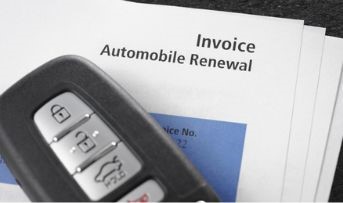
Here's all you need to know about a lapse in car insurance
Buying a car in India is seen as more than just a mode of convenient travel. It is seen as an investment and a status symbol too. In such pursuits, people spend way more on their vehicles than they should.
However, considering the income disparity, uncertainty of economic activity, and rising costs in the current scenario, purchasing such high-value assets without security is not feasible. This makes car insurance a necessity.
Despite the benefits of car insurance, there are several things a policyholder has to consider while going through the buying process. It is essential to remember the policy period and renew it before it lapses. Read on to learn all about a car insurance lapse.
What is a policy lapse?
Car insurance is an annual mandatory policy as per the Motor Vehicles Act 1988. The policy document needs to be renewed within the date mentioned, after which it becomes due and expires—failing to renew it before its expiry is called the lapse of a car insurance policy.
Need to prevent lapse.
A policyholder cannot claim damages incurred after the policy has lapsed since it is no longer valid. Such expenses have to be borne by the policyholder himself. Hence, to protect yourself from getting into such a situation, it is essential to renew your insurance before it lapses.
Effects of a lapse.
Apart from bearing the entire cost of damages by oneself, several other problems arise from allowing your car insurance to lapse, including:
1. Vehicles with lapsed insurance policies must undergo the inspection process, which is rather tedious and time-consuming.
2. After your policy lapses, the premium amount on your policy may be revised and will likely be greater than the amount you were previously paying.
3. Fines and penalties are often inescapable while renewing a lapsed motor insurance policy.
4. If you are found to be driving a car without valid insurance, you may have to shell out a fine of up to INR 2000 as per the present rules in case of your first offence. For repeat offenders, the penalty amount increases, and you may be imprisoned for up to 3 months.
5. Since your insurance is no longer valid, you lose out on the accumulated amount of the No Claim Bonus.
Renewing car insurance after lapse.
Depending on the duration after the lapse, you can proceed with the steps stated below:
1. Within the grace period: Insurance companies usually offer a grace period of up to 90 days post-lapse. If you renew your policy within this period, you may avoid paying additional fees altogether or only have to pay a nominal amount.
2. Post-grace period lapse: If the grace period window has passed, immediately contact your insurer. While some may still allow renewal, be prepared to purchase a new policy if your insurer rejects your request to renew the policy.
3. Post-permanent lapse: If it has been a long while since the expiry of the policy, including the grace period, purchasing a new car insurance policy is the only route remaining. It is inevitable to undergo a car inspection for this process. Ensure you keep track of the policy duration and expiry to prevent making the same error again.
Keeping track of minute details can be challenging amid hectic schedules. Therefore, insurers do their part by sending electronic notifications through texts or emails to alert you about the upcoming renewal of your car insurance. While it is an aid you can benefit from, it is ideal to set self-reminders or set up automatic payments with your bank to stay on top of all things related to car insurance.
Using effective self-reminding mechanisms makes avoiding the consequences of a car insurance lapse easy. Ensure that you compare policies and keep track of periods each time you renew your policy.
Click HERE to buy the best car insurance in India.
Disclaimer: The information provided above is for illustrative purposes only. To get more details, please refer to policy wordings and prospectus before purchasing a policy.

Effective tips to make your house a pet-friendly place
The joy of having a companion is truly unparalleled. While some are fortunate to have multiple family members, some adopt pets to count on as their extended family and sail through life's journey together. However, irrespective of the type of pet, it is a significant decision that requires tremendous planning, which comes with several responsibilities.
You must think carefully before getting a pet to ensure that you can provide an appropriate home environment which is safe and happy for it. Having a house insurance India provides personal belongings cover to keep your home safe from the shenanigans of your beloved pet.
Additionally, consider the following tips to pet-proof your home while making it a haven for your furry friend!
1. Inspect your flooring:
Carpets are a standard accessory in most households but and are an easy way to sweep things under the rug. However, for this very reason, they may be a terrible addition to homes with pets. They accumulate bacteria and pet hair, making the house dirty and a breeding ground for diseases. Hardwood floors or non-white tiles are alternatives that can keep your home looking clean and prevent the build-up of dander and fur.
2. Keep fragile items and antiques away:
Adopting a pet may seem like an activity with only fun involved until you see the sacrifices and additional effort required. Before you get your pet home, ensure that you stash away all your fragile and high-value items for the long term in high locations. This way, you can prevent the possibility of damages that are bound to happen as your restless pet explores its new surroundings.
3. Secure all electrical outlets:
Think of getting a pet as the same as welcoming a baby home. You must go through all the motions of baby-proofing the home to keep your bundle of joy- in this case, your pet, safe. Ensure all electrical gadgets are out of reach and all wirings are secured to prevent accidental shocks. Since pets are prone to chewing on all they can sink their teeth on, regularly inspect and secure any worn wiring.
4. Stock up on space separators:
Most effective when in their younger ages, blockades help keep your pet away from specific sections of your home where you cannot continuously supervise or where you wish to keep them away from. Ideally, section off areas where you have large machines like the washing machine or dangerous equipment like the kitchen or your bedroom if you wish to restrict pet access.
5. Get particular about cleanliness:
Pets are messy creatures. No training can eliminate their tendency to make a mess. Use lint rollers to get pet hair off furniture and periodically vacuum the floor to eradicate dirt and pet hair accumulation. Keep your indoor trash cans covered to prevent your pet from knocking them down and creating a more significant problem.
6. Make use of furniture covers:
Depending on your pet's activity levels and age, restricting its access to particular sections may be futile. Therefore, it may be better to use preventive accessories like furniture covers that protect your expensive sofas, lounge chairs, tables, and even bed covers when not in use.
7. Create an exclusive pet zone:
We often hoard items to maximise the space in our homes, leaving our pets with minimal space to stretch out. Ensure that you allocate a small area in your house for your pet to play without obstructions.
Before you welcome your pet, check the above parameters to provide it with a safe habitat. Buying house insurance India is a prudent move to cover financial losses that may occur to your shared home. Depending on its coverage, the policy may even cover pet damages to the house. We hope you have a wonderful time with your pet and enjoy seeing it grow.
Click HERE to buy the best house insurance India.
Disclaimer: The information provided above is for illustrative purposes only. To get more details, please refer to policy wordings and prospectus before purchasing a policy.

Everything you need to know about family floater health insurance plan
Due to the threat of a global pandemic and the surge of different health crises, everyone now should have health insurance. Health insurance coverage can significantly safeguard you and your family from medical expenses during an emergency. This occurrence can be erratic and unexpected, and to protect the family, you or your family can purchase health insurance individually. Or, it would help if you bought a family floater health insurance plan to offer comprehensive coverage to your loved ones.
What is a family health insurance floater plan?
A family floater plan is health insurance that allows your entire family to benefit from a single health plan. These plans cover every family member under one single umbrella policy. Also, they are cost-effective because only one premium payment is needed for all beneficiaries simultaneously.
What are the advantages of getting family floater health insurance?
One of the best things about buying family health insurance is that it covers people of different ages. Neither senior citizens nor even infants require you to have separate insurance coverage. Here are some of the more notable advantages.
1. The Convenience of policy selection:
A family health plan makes it simple to choose a policy that provides coverage for all beneficiaries at once. There is no need to manage the renewals of many policies for various family members or go through the process of shortlisting them all.
2. Adding new members:
Family health insurance policies generally provide maternity benefits. It is simple to add them and provide coverage for newborns and pregnant women. So, if you are planning to start a family soon, choosing a family floater health insurance plan with maternity benefits can be a good deal.
3. Reasonable premium:
Since single-family insurance covers the entire family, coordinating several policies and their renewal dates is optional. In addition, compared to standalone individual health policies, single coverage can be modified to meet beneficiary demands at an affordable cost. Using the online health insurance premium calculator, you can quickly calculate premiums.
What should you consider when buying a family floater health insurance policy?
There are other factors to consider when purchasing individual health insurance coverage. These rely on the individual needs of each family member. Here are some recommendations for choosing a family floater health insurance policy in India.
● Your policy's coverage:
There are various features that you can review before deciding on the final coverage. Coverage is the most important thing to consider when choosing one of these policies since it varies from one to the next.
● Your plan's adaptability:
You must choose supplemental coverage to cover specific age-related ailments. If you start a family, you might have to select maternity coverage. Keep this flexibility in mind when choosing a family floater health insurance.
● No-fuss experience with claims:
Choosing a plan with fewer documentation requirements and other benefits can help you receive a seamless claim experience even though the settlement process is largely the same across insurance companies. Consider a policy that has a high claim settlement record.
Now that you know the benefits and how to choose a family floater health insurance plan, use these helpful suggestions to have your family covered and enjoy the peace of mind you deserve. Addressing your entire family's medical needs may appear daunting, but with the proper knowledge and appropriate insurance coverage, you can get the best deal. Compare different policies online, and understand their clauses, premium, and benefits before making the final decision.
Click HERE to buy the best health insurance plan for your family.
Disclaimer: The information provided above is for illustrative purposes only. To get more details, please refer to policy wordings and prospectus before purchasing a policy.
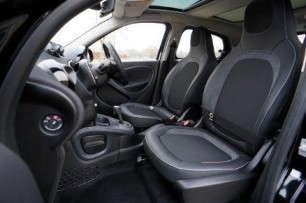
Six things to check before you take new car delivery
Are you taking delivery of your new car? But do you know that there are some prerequisites before signing any papers? Suppose you discover a problem after driving your new car away from the dealership; there are chances your dealer may refuse to take responsibility.
To avoid such a situation and ensure that everything is in working order, set up a pre-delivery inspection checklist and do the due diligence. Also, before you hit the road, be sure you have adequate motor insurance coverage from the best motor insurance company in the event of an accident.
Following is a list of things to look for when you take delivery of your new car.
1. Exteriors of the car:
A car might get damaged while being transported from its manufacturer's facility to a dealership stockyard. Check for dents and scratches, paying particular attention to the bumpers and the sides. In addition, look at the paintwork and the finish. Bring any repaint spots, scratches, or dents to the dealer's attention as soon as you detect them.
2. Check the electrical components:
Inspect and test all of the vehicle's electrical components, such as the lights, power windows, in-car entertainment, and the instrument cluster. When an automobile is left in a stockyard for an extended period, rodents often chew through the wiring, resulting in costly repairs. Furthermore, the battery should not be too old. If it is, ask the salesperson for a copy of its warranty card.
3. Interiors of the car:
After completing the exterior inspection, check the vehicle's carpeting, seats, console, and glovebox. You may check to see any wetness in your carpet by taking off the floor mats. Also, inspect the glasses and mirrors for cracks or scratches.
4. Make sure the tyres are in good condition:
Ensure that the tyres are not older than the car by checking the manufacturing date. A hardened rubber compound in old tyres could reduce road traction and cause them to wear out faster than they should. Also, inspect the spare tyre to ensure it is correctly inflated. Then examine the toolkit to ensure that it contains all the necessary tools.
5. Make sure the A/C is working properly:
Turn on the air conditioning and check how quickly the interior cools down. Vehicles that are parked in the dealer stockyard for long accumulate dust. Dirty air ducts can lead to bacterial growth, which is harmful to human health.
6. Check the engine:
Keep an eye out for indicators of fluid leaks and a damaged engine cover under the bonnet. Examine the fluid levels in your vehicle to ensure that they are at the proper levels for your engine oil, coolant, braking fluid, and windscreen cleaning fluid, among others. Furthermore, the engine compartment should be free of dust and debris.
A brand-new car will rarely cause any difficulties during driving. However, when it comes to maintaining security, ensure that you get comprehensive insurance from the best motor insurance company. Compare different motor insurance plans and select the one that provides you maximum benefits and the best premium. And yes, always take the delivery of your new car in the daylight because you will be able to spot defects, scratches or repair work, if any.
Click HERE to buy insurance from the best motor insurance company.
Disclaimer: The information provided above is for illustrative purposes only. To get more details, please refer to policy wordings and prospectus before purchasing a policy.

Five effective tips for lorry drivers to have safe nighttime trips
Driving a lorry at night can have several advantages, including reduced traffic, availability of parking spots, and a magnificent night sky. While nighttime lorry driving may be relaxing, it is critical to practice safe night driving to avoid mishaps. According to the Ministry of Road Transport & Highways of India, road deaths increase three folds at night.
As human eyes have poor night vision, with decreased depth perception and peripheral vision, it is no coincidence that the highways are dreadful and dangerous after the sun sets.
The best safety tip would be to not drive after dark, but if your schedule mandates you to do so, here are some tips that will help keep you safe on the roads.
1. Adjust the headlights:
Check that your lorry's headlights are correctly set. When it's dark, use upper beams whenever it's safe to do so. Uppers beams can see twice as far ahead as dipper. Switch back to dipper when you're within 500 feet of an oncoming vehicle.
2. Follow speed limits:
It's a fundamental reality that humans can't see as clearly during the night as in the daytime, no matter how excellent their vision is. So, driving slow at night helps you see the warning signs or other vehicles better. Slow down even more during severe weather and foggy conditions due to less visibility.
3. Reduce glare:
Maintaining a clean windshield is vital to reduce the blindness that an approaching vehicle's headlights may cause. Furthermore, replace your wiper blades regularly to maintain a clean windshield.
*Additional tip – Staring at an approaching vehicle's beams can slow your response time. When you see such lights, gaze toward the center or right side of the highway until traffic passes. Moreover, adjust your mirrors so that headlights from vehicles behind you do not blind you.
4. Beware of your limitations:
As per the Ministry of Road Transport & Highways of India, most police-reported truck collisions are caused by sleepy driving each year. Aim for at least seven hours of sleep before you get behind the wheels. If you ever start experiencing fatigue, pull over right away and rest or refresh.
5. Be responsible:
Do what you expect of others, don't use upper beams unnecessarily, don't drink and drive, always use your side indicators while driving, flash your lights before overtaking, etc. Remember, even a small thing can trigger a severe collision and lead to an accident, so be a responsible driver.
Additional Tips:
• Maintain the health of your truck by carrying a routine maintenance
• Cover the truck with motor insurance. You can also buy motor insurance online now
• Overloading is illegal as well as causes much trouble while driving
• Never forget to wear your seatbelt
• Turn on the mp3 player to avoid feeling drowsy but ensure you don't keep the volume too loud as it might prevent you from listening to the vehicles outside
• Take periodic refreshments breaks
Whether you're a novice or an expert, the roads are uncertain. As we earlier said, the best tip is to drive during the daytime, but if night driving is inevitable, these tips will surely benefit you in driving safely.
Visit HERE to buy motor insurance online now.
Disclaimer: The information provided above is for illustrative purposes only. To get more details, please refer to policy wordings and prospectus before purchasing a policy.

Follow these effective tips to keep your asthma under control
Asthma is a health ailment that can take a severe toll on your health. In this condition, the air passage observes inflammation, and the bronchioles of the lungs swell, making it difficult to breathe. Asthma affects the functioning of your lungs and can lead to various long-term diseases as well.
While you can control asthma most of the time, it can affect your daily activities and may even be fatal. If not addressed correctly, the symptoms can worsen over time and lead to severe asthma attacks.
Today we will look at a few ways you can control your asthma.
1. Identifying triggers:
Almost all cases of asthmatic attacks arise due to a triggering agent or underlying factors. It could be pollution, smoke, allergies, exercise etc. Identifying what triggers your asthma is essential to prevent attacks as much as possible. One handy way of doing this is by keeping notes for a few weeks. Take into account all environmental and emotional things that affect you.
2. Avoid allergens:
Once diagnosed with asthma, you can do allergy tests to learn what you are allergic to. A comprehensive understanding of what causes allergies can help you prevent them in the future. Contact with allergens can cause inflammation which may block your airway and worsen your condition due to poor respiration.
3. Immunotherapy:
Immunotherapy or Allergy shots are injected to help mitigate allergic symptoms. Over a period of time, these small doses of specific substances allow the body to adjust to them and become less reactive in the future.
4. Avoid smoke:
If you are asthmatic, you should avoid smoke from vehicles, incense sticks, and cigarettes. Even passive smoking can be a deadly trigger for your asthma. Always carry masks, inhalers, and your asthma medication wherever you go. When stuck in situations where you're unable to avoid the smoke, use masks to cover your face thoroughly. Protecting your air passage should be a priority when you're in crowded places.
5. Take medications:
Even if your asthma has been under control for a while, never skip your medications. Asthma medications are designed to help to prevent symptoms and attacks over time. Skipping on your medications can be dangerous.
6. Keep your environment clean:
Sometimes the bare minimum can go a long way. Regularly vacuuming your couches and floor can help keep dust at bay. Use a dehumidifier to reduce the air's moisture and prevent mold growth. Install air purifiers to get rid of dust mites. Lastly, don't forget to change your bedsheets and liner every week to ensure maximum protection from dust and allergies.
These are a few ways in which you can prevent an asthmatic attack. However, in case of a severe asthma condition, it is advisable to visit a doctor. Having medical reports handy at all times is a good idea to give the doctors a better understanding of your medical history.
We are often not prepared for the expenses we might incur during visits to doctors. Costly medical bills should be the least of your worries in such times. Having the backing of an insurance provider is especially helpful. Consider this a reminder of your health insurance policy renewal and prevent it from lapsing.
Click HERE to know more about health insurance policy renewal.
Disclaimer: The information provided above is for illustrative purposes only. To get more details, please refer to policy wordings and prospectus before purchasing a policy.

Let's understand the risks of driving overloaded trucks
India's vast network of national highways is usually busy with trucks carrying hefty cargo across the states. Transportation of heavy-duty materials and goods is majorly carried out by trucks. Their labour happens to be an essential work that contributes to the entire country's economy and aids multiple industries in flourishing and growing.
As essential as the transportation of the loaded cargo is, it can be a complex process to manage. Hauling loaded shipments for kilometers at a stretch is a strenuous activity and can become dangerous. Due to their massive size and load, several rules and regulations are levied upon the lorries. There are standard weight limitations to be followed to avoid any road accidents. All shipment companies and truck drivers must follow these safety provisions.
What are the basic truck requirements to keep in mind?
1. The weight of the load or cargo must be evenly positioned in the vehicle. Distributing the weight evenly throughout the truck ensures that its balance is maintained while driving. It also guarantees that no part of the truck is heavier than the rest so that it drives safely across the distance.
2. The cargo must be positioned and secured firmly in its place. If any items of the shipment move with the truck's movement along the road, it can cause the lorry to tip over or fall while making a turn. This can cause major road accidents and distract the driver from driving.
3. The regulatory bodies imply a standard weight limitation depending on the truck's size. The driver must ensure that these weight limitations and norms are adhered to before setting off on their journey. Not only can they be heavily fined for disregarding these rules, but they can also cause significant weight displacement of the vehicle, leading to severe accidents.
What are the risks of overloading the trucks?
1. The mechanical components of the truck are proportional to its smooth functioning. The weight limits are placed to protect the vehicle's mechanical parts from the damage caused by overloading. Parts like the suspension and engine can be easily damaged.
2. Heavy loads cause high amounts of pressure on the vehicle's braking system. The driver is forced to push harder on the brakes to stop sooner, impairing the system. Extreme pressure on the brakes can significantly increase the possibilities of brake failure.
3. Like the truck's mechanical parts, tyres can also deteriorate due to truck overloading. It causes a significant chance of them blowing out. A tyre blowout can cause the cargo to shift, displace its weight and lead to accidents. If the driver is unable to steer the truck to safely move out of the road, it may cause a major road collision and pose a threat to other vehicles on the road.
Understanding the risks of overloading trucks is essential to securing yourself, people, and vehicles. Following the safety protocols and driving with alertness and lesser (permissible) load is key to avoiding landing into unwanted mishaps. Investing in a motor insurance scheme can ensure your truck's safety at all times and get you compensated in case of damages. A good motor insurance can help you secure your finances and make your journeys stress-free.
Click HERE to buy motor insurance to safeguard your truck.
Disclaimer: The information provided above is for illustrative purposes only. To get more details, please refer to policy wordings and prospectus before purchasing a policy.

How social media is affecting your mental health
With the internet being easily accessible even in remote areas, today, people engage and entertain more through the digital world. Social media is proving to be a significant source of entertainment worldwide. However, it turns out that it is also one of the rising causes of bad mental health. Primarily, the rise of social media has long-term consequences and adverse effects on people's mental health, including cyberbullying, depression, and severe anxiety.
People think that social media is a mood booster, which is true but under certain limits. Excessive socializing can make things odd for you, majorly affecting your mental peace. Let's take a look at how social media is affecting people's mental health.
1. Comparing our lives with others:
The comparison is one of the primary reasons why people feel socially isolated. As we scroll down our social media feeds, we start comparing our lives with other people. This may be in terms of money, their day-to-day activities, looks, or happy moments. Unfortunately, the habit of comparing ourselves to others is linked with symptoms like anxiety, depression and loneliness.
2. It triggers sadness:
The more you use social media, the higher it triggers your sadness. For example, a person already dealing with mental health issues may see things that can make her feel down. This way, people feel the fear of missing out, leading to higher anxiety.
3. Low self-esteem:
People on social media are all about showing off materialistic things. We tend to feel excluded from these show-offs, which can lead to higher insecurities. Seeing someone ‘perfect’ on social media further lowers self-esteem. You'll begin to judge your self-worth, and that's dangerous.
4. Social acceptance:
Social media has taken over people's minds by its craze for ‘followers’ and ‘likes’. Youth indulge in the thoughts that if they don't get a certain number of likes or followers, they are probably not good enough or aren't socially acceptable.
5. Abrupt sleep cycle:
Social media is like that one toxic addiction you want to leave, but you can’t. According to research, almost two-thirds of the youth check their social media at least once before sleeping. Sometimes you may come across a specific post, and you decide to check about them more out of curiosity. Within a blink of an eye, you'll lose hours just scrolling on social media.
6. Leads to jealousy:
Besides comparing ourselves to others, another way social media affects one's mental health is by inducing jealousy. Seeing other people's success stories, luxurious accessories, and vacations can be envy-inducing. This vicious cycle of jealousy can lead to severe consequences.
The rise in the influencer culture has further brought plenty of side effects on today's youth. Unfortunately, draining mental health can affect one's physical health too. While these health problems may not look concerning, they can turn out more significant and take a toll on your overall well-being, productivity and finances in the future. Therefore, it is in your best interest to get HEALTH INSURANCE so you do not drain yourself financially to protect your mental well-being.
Social media is not just scrolling feeds and looking at what's going on in other people's lives. If you use it wisely, social media is a perfect medium to make you productive and happy. You will find profiles and posts related to improving your well-being, practising mindfulness, drawing positivity through education, and even the importance of mental balance, health insurance and a perfect lifestyle.
Click HERE to buy the best health insurance that fits your needs.
Disclaimer: The information provided above is for illustrative purposes only. To get more details, please refer to policy wordings and prospectus before purchasing a policy.

Work From Home (WFH) culture: Revealing the truth
The year 2020 was considered the year of WFH (work from home). In the beginning, everyone took it as a blessing, and people experienced enough flexibility at work and more time for family. However, as the trend continued into 2021, it presented new communication and collaboration challenges among teams, mental health issues, and imbalance in the work-life cycle.
Working from home looks like a job incentive for many employees, as suddenly they have more flexibility to get their work-life balance. But that's not the whole truth; reality seems to be different. Work from home culture has depended significantly on one question: Is remote working a sustainable option? In this article, we'll discuss some of the most common challenges that home-based workers are facing.
WFH affects your mental health:
Though work from home has proved to be helpful, it is also adversely affecting our mental health. A report states that about 76% of the global workforce recorded negative impacts on their mental health in 2020 due to WFH.
WFH results in total exposure to the computer all day, leading to headaches, fatigue, tiredness, and eye problems. In addition, rather than the benefits of work-life balance, some people lose sleep due to workload and family chores altogether. This continuous work-family adjustment results in emotional exhaustion. People who are hyperactive at work find it hard to detach themselves from work at home.
On the other hand, work from home has turned out to be an advantage for many introverts. You can work from the convenience of your customary conditions without any physical human interaction.
WFH takes a toll on physical health:
Because you are in front of the screens all day, there is no time for physical activities. Due to prolonged remote working hours, people are more often facing health issues. A sedentary lifestyle, irregular food intake, and sleep deprivation are common concerns. Parents working full time, taking care of household chores, and home-schooling their kids face much bigger physical health issues.
Tossing within the many tasks simultaneously; it takes the life out of those employees with productivity shame, lack of motivation and burnouts in most cases. Most surveys suggest that as many as 50% of people have back and neck pain and other musculoskeletal problems leading to more stress. Although the pandemic has blurred the boundaries between work and home, we learned a lot from WFH culture. These alarming health-related issues have brought well-being to the forefront. Both employers and workers are more aware than ever of the impact of mental and physical health.
We all know that stress and fatigue are not just resulting in some temporary problems but are also impacting cognitive health with some life-threatening issues such as anxiety, diabetes, heart diseases, and clinical depression. As a result, the corporate sector is taking measures to ensure the well-being of the employees and assuring better working conditions, flexibility and HEALTH INSURANCE coverage to their employees.
Since WFH impacts your overall well-being, re-think your current remote working style. There are undeniable benefits of work from home if you have a positive WFH culture, flexibility, work-home balance, time for other activities and a health insurance plan to address your mental and financial stress. So go, set in motion the true meaning of WFH!
To get the best deals on health insurance, click HERE .
Disclaimer: The information provided above is for illustrative purposes only. To get more details, please refer to policy wordings and prospectus before purchasing a policy.

Here's a guide to help you start your bike rental business
'Big business starts small' – wise words by Richard Branson. If you plan to become your boss, a bike rental business can be a good venture. A rental bike allows people to ditch cars and public transport without owning a motorcycle or being bothered by BIKE INSURANCE, storage, and maintenance hassles.
In recent years, the opportunities and demands for a bike rental business have increased considerably due to the convenience of two-wheelers. With just a helmet and a 2-wheeler, a person can go around the city efficiently running their errands; or take in some fresh air on an empty highway.
Now that you are ready with your business idea let's proceed to the next step. We have brought together these seven easy steps to help you start your bike rental business.
Step 1
Plan – 'A target to accomplish without a plan is just a dream!'
• Estimation of setting up your business
• The business operation cost
• Potential customers (set up the target audience and promotion offer accordingly)
• Method of business (hourly or daily rates, whether or not you will sell bike-related merchandise, policies concerning damage caused, etc.)
• More profits (consider extra services, like bike sales and repairs; if in a tourist place, offer tour guides)
• Name of your business (what's there in the name? Your brand, logo, website, etc.)
Step 2
Tax – 'Pay for doing the right thing!'
Register for taxes; your small business will be taxed depending upon your business structure (e.g., LLC or Sole Proprietorship.)
Step 3
Bank accounts and credit cards – 'Start your financial journey!'
A business bank account separates your assets from your company's assets. Similarly, getting a business credit card will help you separate your business and personal expenses, and it builds your company's credit history, allowing you to acquire your investments later.
Step 4
Daily cash flow and expenses – 'Maintain a proper business account!'
Keeping track of various expenses and income is crucial to understand financial performance. It also simplifies the tax filing for you. Carefully manage the cash flow, make all entries and maintain a daily account sheet.
Step 5
Legal requirements – ‘Keep the books clean!’
Get your company’s name registered, obtain GST, PAN card, trademark certificate, and other prerequisite licenses and permits to avoid any fines or legal issues in the future.
Step 6
Insurance – 'Keep your umbrellas ready before it rains!'
Similarly, for your firm's financial security, it is necessary to get the right business insurance. There are several types of insurance policies designed to cover different risks. For the growth of a bike rental business, the security of bikes makes a huge difference. With the rising operation cost of the bike rental business, having robust bike insurance plans helps you overcome financial risks related to your bikes.
Step 7
Move online – 'Make the internet your new market!'
Maintaining a good website and the social media platforms like LinkedIn, Facebook and Instagram will help your business to grow with more user engagement. In addition, you can flash special offers, exclusive deals, trade merchandise as a part of your marketing strategy to draw more sales.
For running a bike rental business, you need to have mechanical skills or hire at least one full-time mechanic. Remember, a nonoperating bike won't earn you any money. Also, a significant amount of your customers can be tourists, so you should be well acquainted with the location to build a good customer relationship. Follow your passion and work in the direction of making your vision a reality with this quick guide.
Are you starting a new bike rental business? Click HERE to buy insurance that will ensure the safety of your bikes.
Disclaimer: The information provided above is for illustrative purposes only. To get more details, please refer to policy wordings and prospectus before purchasing a policy.

Eleven good habits every two-wheeler rider should follow
The two-wheeler segment is considered the most convenient mode of commutation in our country. It is believed that 'life is better on two wheels.' With a couple of benefits like fuel efficiency, compact design, and budget-friendliness, two-wheelers are people's personal favourite to withstand the fast pace of life. From youths to retirees, you will find a large Indian population riding two-wheelers.
Despite many worthy features, two-wheelers elevate the risk involved in riding them. No matter how good your driving skills are, you can't deny the risks involved with two-wheelers. Unfortunately, people tend to overlook it while riding two-wheelers. Following traffic and safety rules is essential even if you have many years of experience under your belt. In addition, pursue another good habit of renewing your 2 WHEELER INSURANCE to ensure security in case of mishaps.
We bring these eleven good habits every rider should consider:
1. Start your two-wheeler only after wearing the helmet. It is unlawful and dangerous to ride a two-wheeler or a bike without wearing a proper helmet. The helmet should be ISI certified and of the best fit.
2. Always go for a bike that you can comfortably ride and control. Choose one that is appropriate for your physical capabilities, low maintenance, and compliments your budget.
3. Overtaking a vehicle from the left is always the wrong decision you'd ever make. Stay away from overtaking at intersections, schools and public zones, bridges. Honk before you take a turn.
4. The rider must be visible to other vehicles during the night and extreme weather conditions like fog. Stick reflective bands on the helmet, use dipper lights appropriately, especially when riding at night.
5. Riders must be cautious of their proximity to the vehicles ahead of them. Understand the distance required to go to a complete halt and brake correspondingly.
6. Maintain your motorcycle or scooter in excellent working condition and get regular servicing at an authorized workshop or service centre.
7. Always look out and be aware of potential dangers such as speed bumps, potholes, environmental disasters, and pedestrian crosswalks.
8. Obey all traffic rules religiously. Always signal first so that others can anticipate your next action. Make sure you don't slam on the brakes or make sharp bends suddenly.
9. Using your phone on the bike is a big threat for the rider and the pillion rider. If it is exceptionally urgent, pull over your bike at the side of the road to use your phone.
10. Only because you own a vehicle does not make you superior on the road. Be considerate of pedestrians and allow them to move before you in all situations.
11. In addition, an overall increase in service cost, maintenance fee, or a sudden accident may impact your financial plan. So, prepare for uncertainties in advance with 2 wheeler insurance.
2 wheeler insurance will not just cover your finances at times of damage but will also provide you with compensation if your two-wheeler is stolen.
Keep the above-mentioned habits in mind and enjoy the pleasure of a bike ride to chase more smiles per hour.
Looking for 2 wheeler insurance, click HERE.
Disclaimer: The information provided above is for illustrative purposes only. To get more details, please refer to policy wordings and prospectus before purchasing a policy.
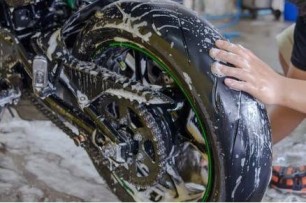
With these five tips, you can give your bike tyres a long life
Bikes are the most commonly used vehicle when it comes to riding on India's busy roads. But did you know that your safety relies on one more thing than just your driving skills? Your choice of tyres and how you maintain them are two major factors contributing to a safe and smooth ride.
Still, most of us don't take the health of our bike's tyres very seriously. Tyres suffer a lot while making your riding experience pleasant. Besides this, bike tyres face significant external damage and develop cracks due to constant wear and tear. You cannot afford to leave the tyres unattended because a faulty tyre can be a threat to your life and others around you. Below are the five best tips to increase the life expectancy of your bike's tyres.
1. Wash them regularly:
Cleaning the tyres of your bike is an essential routine that you shouldn't miss. Leaving dirt will expose them to damages, thereby affecting their quality. The dirt racks up on the tyre's surface and affects its grip, which tends the bike to skid on the road. So, next time you go to the washing centre, get the tyres clean and dirt-free thoroughly.
2. Schedule regular repair checks:
Your bike runs over any sharp object like a nail or edgy stones on the road. With time, tyres also meet with alignment and wheel balancing issues. This happens due to extensive riding and wear and tear of treads or grooves. Get these issues fixed at the earliest, as otherwise, such things can damage the tyres inside out.
3. Get the best fit:
Sometimes we opt for fancy or trendy tyres and don't pay heed to the actual requirement. Always look out for the best fitting and necessity of your bike and its model. Mismatching tyres is never a good option – neither for your bike nor for you.
4. Timely replacement of tyres:
Tyres don't come with a lifelong guarantee. Ideally, they need to be changed every 4-5 years, or the kilometres you cover, depending on your bike's specifications. Due to resisting the friction continuously, tyres tend to lose their grip. Taking out your motorcycle with such tyres on the road is dangerous, especially on uneven roads or during the rainy season. So, timely replacing of tyres is required before the situation gets uncontrollable.
5. Check for ideal pressure:
Refer to the user manual of your bike to know the perfect pressure of the tyre and maintain it consistently. Don't forget the essential maintenance of air filling and oiling the engine. Riding under less pressured tyres is risky as there are chances of bursting or unexpected puncturing.
Your bike is your responsibility, and keeping it in good shape will give it an extended life. Moreover, regular maintenance to your bike and tyres promises comfortable and safe rides to you. Along with good care, buying suitable BIKE INSURANCE also counts as a wise step. Bike insurance comes with plenty of benefits that can help you as an owner during unfortunate incidents like accidents, theft, or damages due to calamities.
Click HERE to buy or renew your bike insurance online.
Disclaimer: The information provided above is for illustrative purposes only. To get more details, please refer to policy wordings and prospectus before purchasing a policy.

Is it a good option to plan long-distance tours on your commuter bike
How often have we dreamt of going on a perfect road trip with friends? Most people prefer to take cars or SUVs for road trips, but many biker gangs tell us about the fantastic opportunities you can come across while touring the country on a bike.
On a motorcycle trip, you interact with the local community more closely, navigate treacherous roads more efficiently, and skip traffic jams. But all said and done, not everybody has access to fancy bikes that are meant for long trips. The question remains, do you need to compromise on the thrills of life just because you do not have a certain kind of bike? Not at all!
In this article, we will examine why commuter bikes can also be used on long road trips and the few things you need to remember before taking your bike out.
1. Riding:
The time and the distance covered plays an important role in long road trips. It is easier to maintain a high speed in higher capacity bikes, whereas in lower capacity bikes, the engine starts to sputter beyond a speeding limit.
If you intend to take a commuter bike on a trip, it is best to stick to a speed that does not force your engine and the body to shake vigorously. Remember to increase the acceleration and use breaks smoothly whenever required.
2. Braking:
It is challenging to maintain a standard speed when you have open and empty roads ahead of you. But it is important to remember that standard bikes have different braking efficiency than superior motorbikes. Maintaining a tunnel vision and keeping track of everything ahead will help you in these conditions to use brakes efficiently.
Also, maintain a significant distance between your vehicle and the vehicle ahead of you. So, in situations where you are required to brake suddenly, you have ample time to avoid crashing.
3. Clothing:
Irrespective of the bike you ride, it is best to wear appropriate clothing to avoid injuries and bruises in case of accidents or crashes. A good quality helmet with a clear visor, riding boots, and gloves are essential parts of your bike accessories. Throw in a pair of knee guards and armour jackets for added protection.
4. Maintenance:
Before taking that much-awaited road trip, it is important to keep yourself and your bike in healthy condition. Do not forget to take your bike to an expert to get it checked for any defects and faults. Remember to check your bike's braking system, spark plugs, and engine efficiency before taking it out on a ride. Also, carry essential medicines and lots of water to avoid fatigue and lethargy.
These are a list of a few things that you need to remember while taking your commuter bike on a road trip. With regular maintenance and caution, remember that your commuter bike is a trustworthy option if you want to travel and explore more.
Even though they might have a low-power engine, with the right handling and proper planning, you can surely enjoy a memorable long trip with your commuter bike. To add more value to your bikes, do not forget to invest in Bike Insurance Online to safeguard yourself against any expenses you might incur in repairs or accidents.
Click HERE to buy bike insurance online.
Disclaimer: The information provided above is for illustrative purposes only. To get more details, please refer to policy wordings and prospectus before purchasing a policy.

Important things to remember if hitchhiking someone in your car
Hitchhiking is not as common in India as in other western countries. Thanks to the rising safety issues and the constant reminders from our mothers on why we should not talk to strangers, hitchhiking or offering a ride to strangers is an alien concept. However, over the years, we have seen a hitchhiking trend among young travellers to save some money. But how safe is it to offer a ride to strangers? What are the things to look out for when hitchhiking someone? If these are some of the questions you have when you think of hitchhiking, then this article might be able to help you with those.
Here, we will look at some safety measures to ensure your safety in situations like these.
1. IDs and bags:
If someone has asked you for a ride and you want to help them, then the first thing to do is to check their IDs. Crack open the window slightly and take a picture of their ID on your phone. If they have bags or carry-ons, ask them to place them in the boot space with their ID in the bag. Ensuring they are empty-handed while sitting inside the car makes you less susceptible to attacks and robbery.
2. Show pockets:
Ask the hitchhiker to empty the pockets before entering the car. This way, you can ensure that the person is not carrying knives, scissors, or other equipment that can be used to attack or steal from you.
3. Keep them in your range of vision:
Never let them take the back seat. You must keep them seated where you have a clear vision of their actions. This is a crucial point to remember to ensure your safety.
4. Do not take food from them:
If they offer you food or drinks on the way, do not eat them. These can be quickly spiked using drugs that do not alter the taste of the food. Narcotics and sedatives can be used to make you unconscious. This is the leading cause of car theft in this country.
5. Do not hitchhike a group:
If you are driving alone, it is best to hitchhike solo hitchhikers. That way, even in an attack, you will need to worry about handling a single person.
6. Always be alert:
This is a no-brainer. If you want to help out a stranger, you have to be prepared for the dangers you might face. Always keep pepper spray and other tools that, when used, give you ample time to escape.
7. Do not hitchhike in new locations:
It is best to avoid getting strangers on board if you are a tourist. This is a common way of scamming people for money and other belongings. If you are new to a place, you might not be able to get immediate help and can also be unaware of escape routes.
If you want to hitchhike someone in your car, you need to keep these things in mind. Remember that not everybody is a thief or a fraud. Hitchhiking is an efficient way to cut costs while travelling, and youngsters depend heavily on hitchhiking to commute between places. Sometimes people need genuine help. If possible, provide food and water to roadside hitchhikers and call for help if you can.
On that note, take essential steps to safeguard yourself and your car against theft and vandalism and invest in a Car Insurance policy. If you do not have these essential add-ons, consider getting them during your next car insurance renewal.
Click HERE for car insurance renewal.
Disclaimer: The information provided above is for illustrative purposes only. To get more details, please refer to policy wordings and prospectus before purchasing a policy.
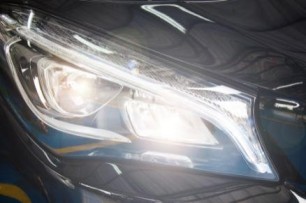
Is personalising your car a good idea
Personalisation is a key to reaching the customers' hearts in the current times. Every brand has been trying to create its products with options to add a personalised touch for the consumers to feel like their own. The entire marketing world has been trying to come up with ways in which they can win this race and convert more customers to purchase their products and keep coming back for more. Personalisation, as a critical factor in today's customers' buying patterns, has a considerable influence and can change the game in the market.
We can comprehend personalised touch in small products like clothing, accessories, soft toys, sports kits, skincare items, and much more. But, can you add this unique touch to your car? Are such options available in the market? Are these choices limited? Are you someone who is looking for the answers to these questions and perhaps some more information on the same?
This blog answers all these questions about personalising your car and whether it is a good idea. Let's get started.
1. Number plates: yay or nay?
Customers pay extra money selecting a unique number to add that personalised touch to the vehicle. And this personal number will help you fetch a good deal as it amps up your car's resale value when you want to switch to another vehicle and close an agreement on the car you currently own.
On the plus side, a personalised number will make you part of the cool collector's club in the world of cars. It creates a "connoisseur of cars" persona for you as well.
2. Increases the level of safety while driving.
Adding a personal touch to your car requires a massive investment of money. The amount of money you spend depends on the features of your vehicle you want to modify and the accessibility of the tools, among other factors involved here.
But since you spend quite a large amount of money, you try to protect your car against any damages. This leads to you making mindful choices on the road, including taking extra safety measures while driving, ensuring that you obey the traffic rules even in urgent times, and avoiding any "road rage" type of scenario.
You can customise your mirrors to lessen the chances of blind spots in your vehicle while driving. You can get a complete view of your car's positioning and the vehicles near you if you decide to get a 180-degree mirror.
3. Upgrade the entire look.
You can get High-Intensity Discharge (HID) headlamps for your car, which would help you upgrade the look of your vehicle and come in very handy by improving the visibility when you are out on the road during the nighttime.
These HID headlamps work with a light temperature and emit subtle blue light, which elevates the look of your car. The blue light not only looks attractive and complements the car's exterior but has been proven easy on the eyes and does not blind the driver coming from the opposite direction.
Speaking of investing money into upgrading the look of your vehicle with the help of personalisation, you also need to ensure that you protect your car against damages. Not all accidents come with a warning and are your fault. But you must ensure that you wouldn't want to get involved in such chaotic situations.
You must have car insurance to stay stress-free financially and focus on resolving the situation if you end up in one. Explore all your options, check in with your current insurance provider, and Buy New Car Insurance which caters to your needs in the best ways possible.
Click HERE to learn more about how you can buy new car insurance.
Disclaimer: The information provided above is for illustrative purposes only. To get more details, please refer to policy wordings and prospectus before purchasing a policy.
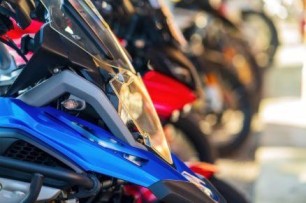
Let's understand the evolution of two-wheelers in India
Two-wheelers have been around for decades. Almost every average family in the country owns a two-wheeler which they use to run errands. The purpose of the two-wheeler depends on several circumstances and the motive of the commute. Two-wheelers are the most popular personal transportation services and fall into the affordable category. The prices increase depending on the type of the two-wheeler, its purpose, and its features.
But have you ever thought about the history of these vehicles and how they grew so prevalent in our country? How did they first come into circulation? Well, we will sail you through the evolution of two-wheelers in India through this blog.
1. What was the purpose of two-wheelers?
The two-wheelers were developed to provide people with a safe and convenient option for smooth rides. They have evolved over the years, and we now have bikes that range in lakhs with multiple fancy features, a dream of every bike fanatic. Now let's take a road down memory lane and revisit the evolution of two-wheelers in India.
2. The era of vintage bikes.
We all know the brands that manufacture classic and vintage-style bikes. Apart from being known for their royal appearance and elegance, these bikes represent a class apart from how they steal the show in the market. It was the year 1902 when a single-cylinder engine motorcycle was sold first time in India. Purchasing or owning a bike of this category used to express a solid and respectable financial status and background, rather than just being considered a bike used for everyday purposes.
3. What happened after the classic bikes became old news?
The market welcomed other two-wheeler brands which manufactured these noisy bikes that would leave their impressions behind by the loud sound of their silencers or by the whiffs of smoke released. The era of scooters came in as these bikes became popular.
The design, the efficiency, and how it differed from the widely popular bikes ignited its charm. The popularity of scooters escalated beyond expectations in the 70s till the late 80s, and there used to be a waiting period for the purchase! The crazy high prices of the scooters did not discourage the people from waiting for an extended period to bring them home.
4. Welcoming other foreign brands.
At the beginning of the '80s, India became a popular destination for various foreign brands to make their sale. The two-wheeler industry formulated partnerships with these brands to bring them to India at a cost affordable to the Indian audience. The collaboration with these companies grew exponentially, with the foreign brand names becoming a standard of every Indian household.
Today, the bike industry has diversified, from comfortable tourers to compact city bikes and from fuel-efficient to race engines.
Some more informative pointers to understanding the evolution of two-wheelers in India include how these landmark bikes and other categories became a reference model for the other brands' style, design, and comfort patterns. Now, we are heading into the era where electric two-wheelers are no more a concept but a reality!
Quite interesting to visit how two-wheelers in India became widely popular. And while we revisit the timeline of these developments, you need to be aware of how crucial it is to safeguard your two-wheeler. Being a bike owner feels fantastic, but living your responsibilities as the owner is paramount.
You must hold yourself accountable to maintain your bike's best shape. This can be possible with the help of two wheeler insurance.
Take your search online, and find the Best Two Wheeler Insurance India to buy coverage that keeps your asset safe and sound. Invest in a policy that ensures the best returns and an efficient claim settlement process.
Click HERE to know more about the benefits of buying the best two wheeler insurance India.
Disclaimer: The information provided above is for illustrative purposes only. To get more details, please refer to policy wordings and prospectus before purchasing a policy.


